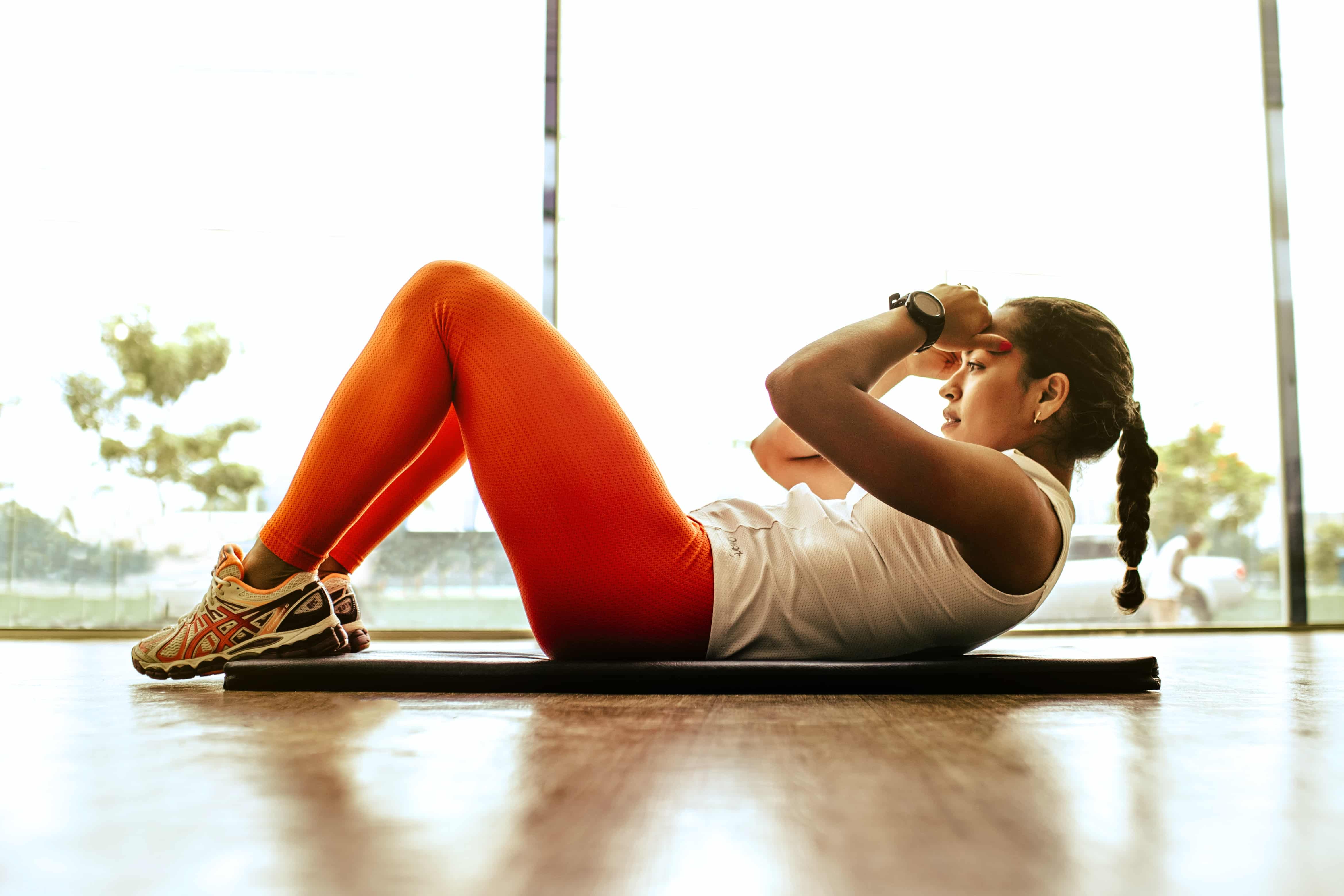
When it comes to ab exercises, crunches are a story as old as time. This move has played a role in core workouts galore, from fitness newbies to the most avid gym goers.
But even the most seasoned workout enthusiast can make some common form mistakes when crunching, making the move less effective and potentially painful. The next time you hit the mat for an ab workout, avoid these four mistakes and consider switching to some physical therapist-approved moves.
Common Mistakes
Doing crunches correctly is more difficult than it seems. Avoid these mistakes to make them as effective as possible.
strain the neck
Have you ever felt that the front of your neck starts to hurt after several repetitions of crunches? If that's the case, you're probably holding your neck at an odd angle while performing the exercise.
But you are not alone! Overextending and overflexing the neck are among the most common mistakes people make when performing crunches.
Unfortunately, whether you're crunching with your chin too high (towards the ceiling) or too low (towards your belly button), you can cause muscle tension or pain in the surrounding joints. This mistake can also cause you to use momentum to do the movement instead of working your abs. Imagine that there is a tennis ball between your chin and your chest. Keep that tennis ball shape in mind the entire time you're doing your crunches. If we place the chin on the ceiling, the muscles of the back of the neck will be intensely exercised. This will cause neck pain, and possibly a headache, a few hours after doing crunches.
Although you can try to avoid it in all other circumstances, make a double chin is a good thing in this case. Tucking your chin in slightly can help improve the position of your neck.
The lower back is lifted off the ground
Another common mistake is a loss of core engagement and pelvic control. But this error defeats the purpose of the exercise.
Especially if you're doing a lot of reps on your sit-ups, you can start to slightly lift your lower back and pelvis off the floor as the muscles begin to fatigue. Although some series will generally not cause problems, you may experience some hip and lower back pain if this mistake becomes a habit.
Think about keeping your lower back flat against the floor throughout the movement. In some cases, it can be helpful to "imagine a water balloon under your spine that you want to pop."
Or you can place a resistance band flat under your spine and have a friend remove it for you. If you are in the proper position, the band should not move.
going down too fast
If you're doing crunches correctly, you need to control the lowering part of the exercise. But often, people tend to release tension in the core, letting the body roll backwards or fall to the ground.
Doing any exercise too fast causes poor technique, which usually uses muscle groups that are not intended to be part of the exercise. As a result, you don't get any benefit for the work you're putting in (and who wants to do crunches for no reward?).
Keep your body weight controlled, especially when you come back down to the ground. Take two to three seconds on the way up and down from your contraction.
It's better to do fewer reps at a slower pace, concentrating on form than trying to do more reps where form falls apart.

you forget to breathe
It may seem obvious, but forgetting to breathe (or breathing incorrectly) during an exercise, especially crunches, is definitely a common mistake.
Sometimes it can be easier to engage your abs while holding your breath, but this is not a smart solution. Holding your breath for too long while exercising can cause serious complications and put your health at risk.
Align your breath and movement. Inhale as you lower yourself towards the floor and exhale as you lift your shoulder blades off the floor. By aligning the breath with the movement directly, you create a more natural rhythm and help minimize the chances of holding your breath.
Do not raise your back
Most people can anatomically roll to about the eighth thoracic vertebra, which is the bottom of the shoulder blades (the line where the clamp rests). This can be achieved while still being able to keep the pelvis in a neutral position.
That's how high we need to go on each crunch. Curving just the head and neck forward does not help the abdominal muscles at all. In addition to not activating the abdomen, we will be overloading the trapezius and neck muscles. This is what will cause pain and injury.
However, the crunch is a subtle movement, lifting the shoulder blades a few inches off the ground. Shaking the shoulders up adds momentum and reduces the effectiveness of the exercise. It takes time to build abdominal strength, so it's best to take your time and move slowly rather than using momentum to lift your body.
Do many with bad technique
Ten slow crunches with the right technique can take the same amount of time as 100 super fast crunches with poor form. It's not about how many you do. We must focus on the perfect technique instead of the amount we are doing. By the time we notice that the technique is poor, the muscles are tired and you need to take a break.
This also has to do with moving the elbows excessively. It is recommended to keep them open to the sides and still. Once again, the arms have nothing to do with the abs. Engaging the pecs, which is primarily what will happen when we move our elbows forward, will only focus the mind on correct form and activate the abs.